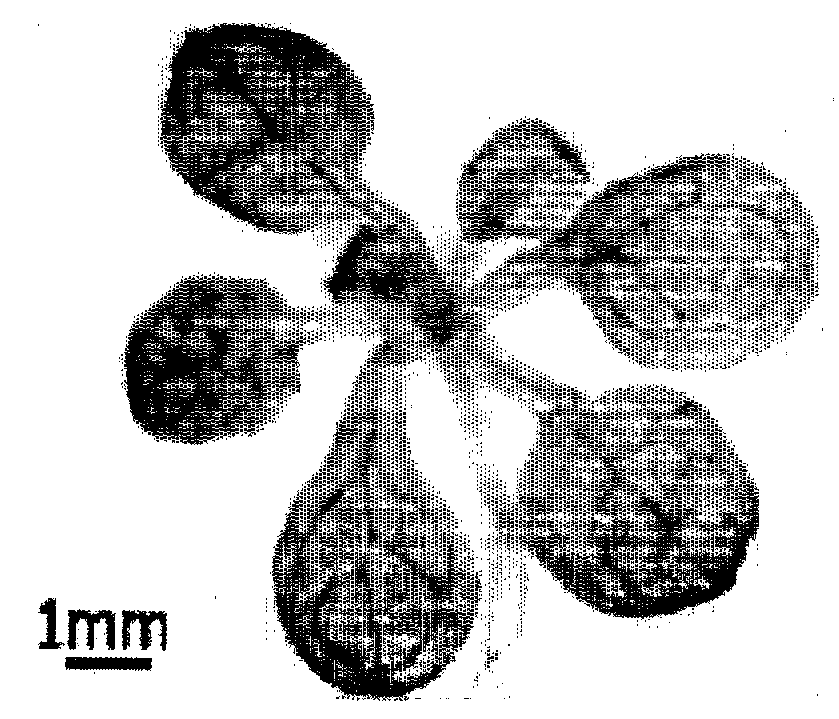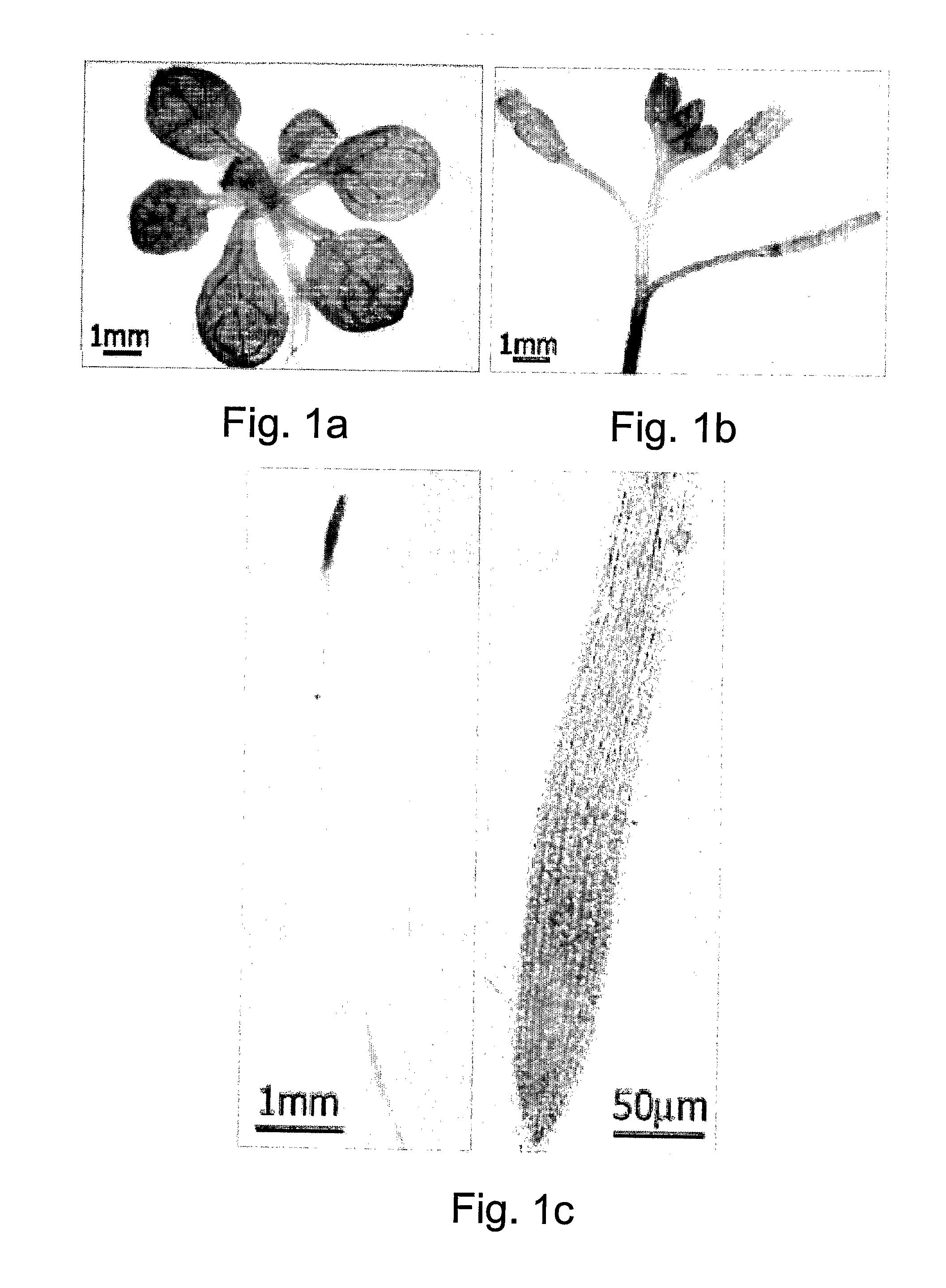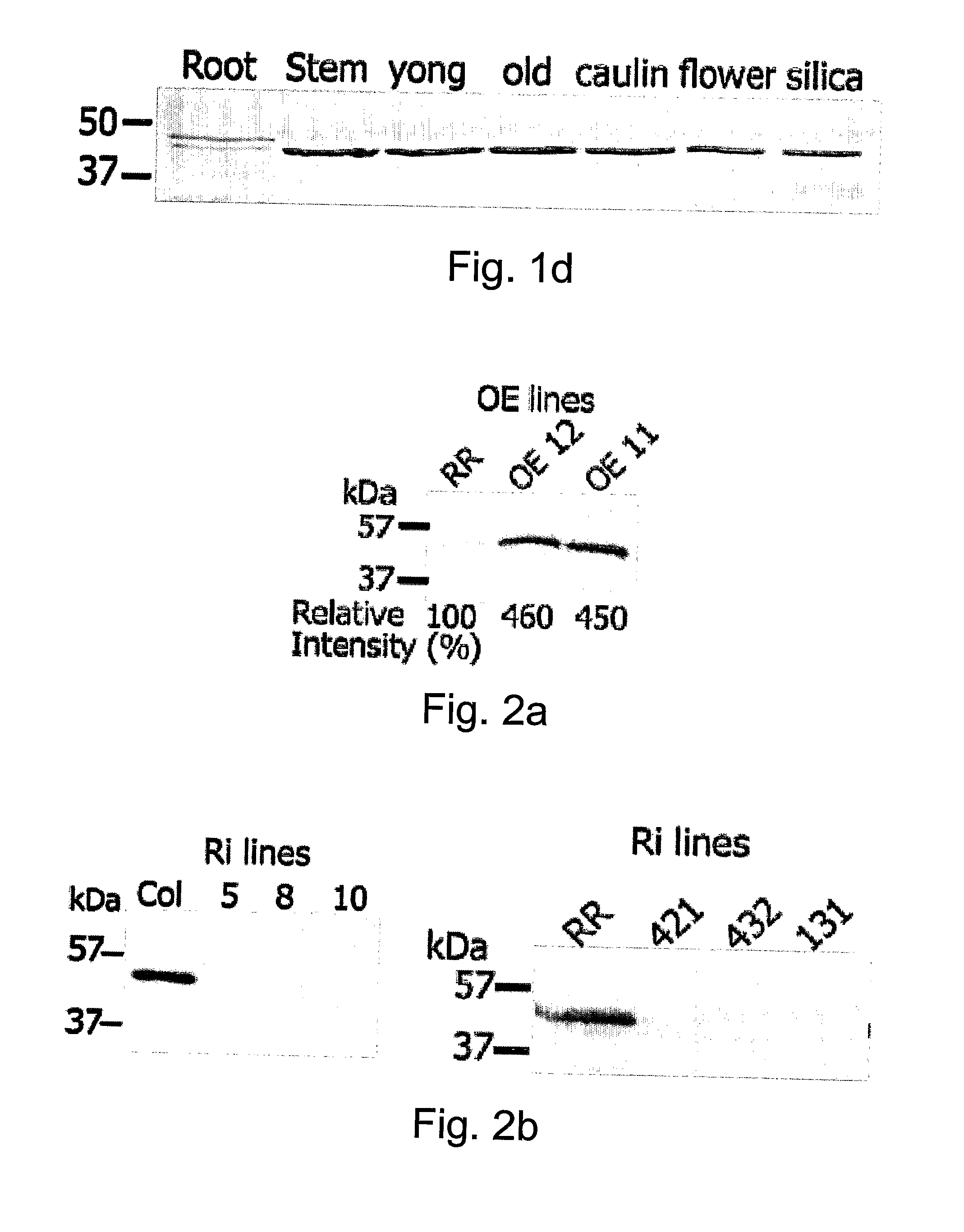Control of so2 metabolism in plants and its applications
a technology of so2 metabolism and plant, applied in the field of transgenic plants, can solve the problems of toxic free radicals, limit the effectiveness of the use of sulfite-producing substances in agriculture, and death in infancy, and achieve the effect of improving post-harvest quality
- Summary
- Abstract
- Description
- Claims
- Application Information
AI Technical Summary
Benefits of technology
Problems solved by technology
Method used
Image
Examples
example 1
Expression of SO in Plants
[0224]SO is present as a single gene in Arabidopsis. Digital northern and response activities of a 2,204-slide size microarray collection by GENEVESTIGATOR (https: / / www.genevestigator.ethz.ch) (Zimmermann et al., 2004) showed that SO is constitutively expressed in all plant organs and is was not significantly induced in any of the 75 diverse experimental conditions represented in the microarray (results not shown). To obtain a more accurate image of SO expression in plants and plant tissues, a 1,562 bp promoter fragment (90500-92062 bp in the BAC F1C9 sequence) (SEQ ID NO: 68) was used to direct the expression of the β-glucuronidase (GUS) reporter gene in Arabidopsis. Out of 20 transformed lines 5 had significant levels of expression. Histochemical analysis showed GUS expression in all tissues (see FIG. 1a-1c) with a higher degree of staining in stem, hypocotyls and root vasculatures (FIG. 1a) and at the root tip and young inflorescences (FIGS. 1b and 1c).
[...
example 2
SO Modified Plants
[0226]In order to evaluate the role of SO, its expression levels were modulated in Arabidopsis (AtSO) and tomato (LeSO) plants.
[0227]Cloning and sequencing of Tomato SO: Full length tomato SO (LeSO, GenBank Accession number DQ853413) was cloned and sequenced using SO specific primers, as described in Experimental procedures hereinabove. The resultant full length tomato SO (LeSO) exhibited 77% identity with Arabidopsis AtSO (Eilers et al., 2001). The LeSO sequence includes the C-terminus tripeptide ANL, which corresponds to the consensus peroxisomal targeting signal type 1 (A / C / G / S / T-H / K / L / N / R-I / L / M / Y) (Mullen et al., 1997a; Mullen et aL, 1997b). While not wishing to be limited to a single hypothesis, it seems likely that the presence of the peroxisomal targeting signal in both the tomato and Arabidopsis genes indicates functional similarity between SO in the two plant species.
[0228]Modified expression of SO in transgenic plants: In order to determine the effect of ...
example 3
Transgenic Plants Over- or Under Expressing SO Exhibit Modified Susceptibility to Sulfite and Sulfite-Producing Substances
[0235]Susceptibility to Na2SO3: To further examine the response of SO modified plants to sulfite and sulfite-producing compounds, leaf discs of representative wild type and SO-modified transgenic plants were treated with 7 mM Na2SO3, and then viability and health of the tissue determined. Leaf discs of all SO-null RNAi Arabidopsis and tomato lines showed significantly higher chlorosis and damage than wild type and over expression lines (Arabidopsis, FIG. 4a; and tomato, FIG. 9a). Further, since chlorophyll content is a sensitive indicator of leaf health, the chlorophyll content of the wild type and transgenic plants was determined. After 24 hours exposure, a reduction in the level of chlorophyll of 30% to 50% was detected in all Arabidopsis SO-null RNAi lines compared to a reduction of 10% in wild type lines (FIG. 4b). Chlorophyll content of all tomato SO-null RN...
PUM
| Property | Measurement | Unit |
|---|---|---|
| Ri | aaaaa | aaaaa |
| diameter | aaaaa | aaaaa |
| diameter | aaaaa | aaaaa |
Abstract
Description
Claims
Application Information
 Login to View More
Login to View More - R&D
- Intellectual Property
- Life Sciences
- Materials
- Tech Scout
- Unparalleled Data Quality
- Higher Quality Content
- 60% Fewer Hallucinations
Browse by: Latest US Patents, China's latest patents, Technical Efficacy Thesaurus, Application Domain, Technology Topic, Popular Technical Reports.
© 2025 PatSnap. All rights reserved.Legal|Privacy policy|Modern Slavery Act Transparency Statement|Sitemap|About US| Contact US: help@patsnap.com



